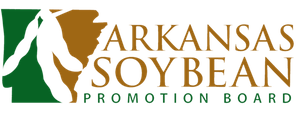Developing Profitable Irrigated Rotational Cropping Systems for Arkansas Dr. Jason Kelly, University of Arkansas System Division of Agriculture Agronomist
Dr. Jason Kelley, an agronomist with the University of Arkansas System Division of Agriculture, recently concluded a nine-year project looking for ways to increase soybean yields in Arkansas. The findings of this project are now being used to help producers make the most profitable crop rotation decisions.
Kelley considered how yields respond, how crops respond and the economics that producers have to consider each year. He found that where corn and soybeans are rotated, the next year’s soybean yields are greater.
“Group IV soybeans planted in early April have yields five to seven bushels greater following corn or even grain sorghum than continued soybeans,” Kelley said.
Kelley also looked at the double crop system. He found yields are 15-17 bushels less when soybeans are planted in June. While it’s hard to pinpoint exactly why that is the case, he says it could be the soybean cyst nematode or just rotational affects.
When asked if till or no till is better, Kelley said the yield isn’t impacted. The type of soil also makes no difference. However, each year of this project was different, which is why it went on for so long.
A large factor of this project was economics. Kelley acknowledged that corn isn’t always at prices that are worth planting, so that can make rotating crops difficult. However, rotation is important.
“Nine years of continuous soybeans is not a good thing,” Kelley said.
Producers were experiencing this in their fields already. The data from Kelley’s project backs up their experiences and will help them as they make future planting decisions.
Watch the full Field to Film: Featured Research video series here to learn more about checkoff-funded research projects. Find the podcast version of this series for on-the-go listening here.
